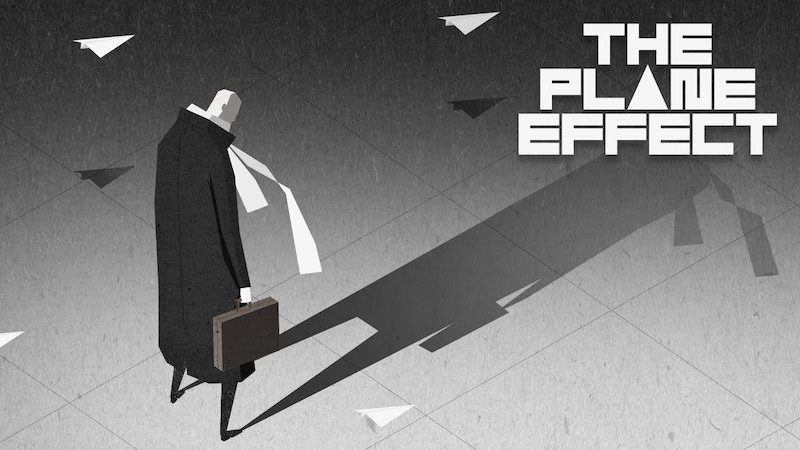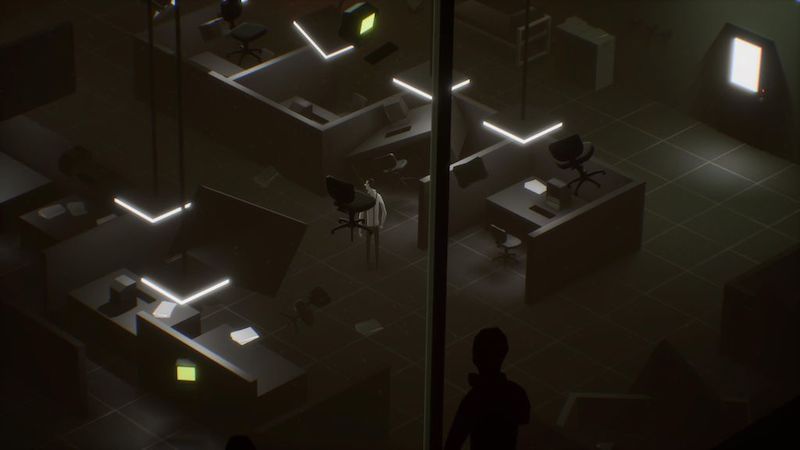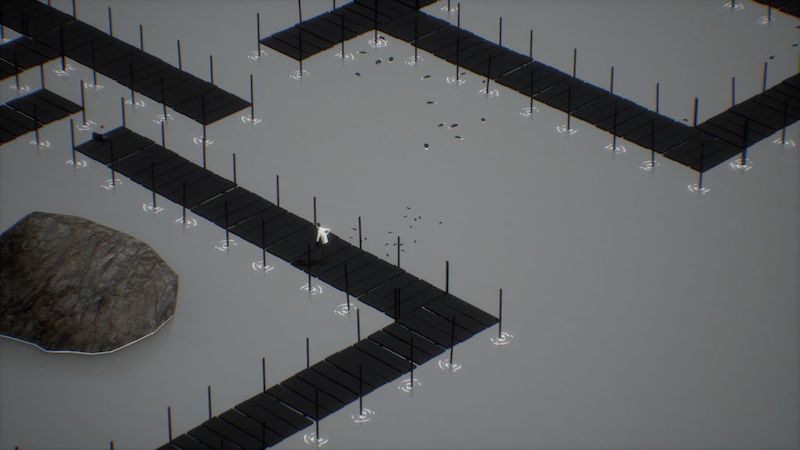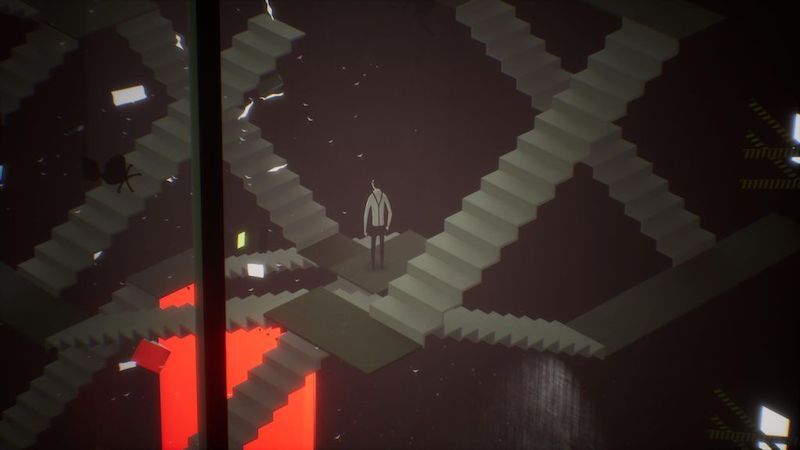The Plane Effect PS5 Review. Since the indie boom of the PlayStation 3 era, and Playdead’s success with Limbo in particular, the abstract walking simulator has become something of a niche sub-genre with more and more developers exploring the monotony of real life through the medium of video games.
The Plane Effect is Studio Kiku’s take on the genre, seemingly taking inspiration from its modern contemporaries Inside and Mosaic, while adding its own flavour with puzzles and some variety in the gameplay, and a unique subject matter in that the sole objective is to leave your grey workplace cubicle and go home.
Of course, it’s never as simple as it sounds, and your unnamed, faceless character is taken on a wild goose chase in search of home.
The Plane Effect PS5 Review
This Walking Simulator May Be a Little Too “Plane”
Upon starting a new game, it’ll ask you whether you’d like to play in Normal, Narrative Hint, or Guided mode, with each one offering progressively more assistance. Normal will leave you be and let you attempt to solve its puzzles without any interruptions or assistance, while Narrative Hint and Guided let you hold the L1 button for a helping hand from the developer. For the sake of trying to play the game in its purest form, I opted for Normal to begin with.
The thing is, The Plane Effect’s puzzles are so egregious that I was forced to turn on the Narrative Hint mode – which shows a graphic representation of whatever it is you’re looking for – within the first half an hour of gameplay. When you’re searching for a visually unremarkable coin on a train station’s platform, just knowing that you’re looking for a coin doesn’t really help the matter as it could quite literally be anywhere.
The puzzles are so strict with their sequencing, too, that you could well have tried to pick up the coin you’re looking for earlier on, only for your character to shake his head indicating that it’s of no use to you.
Before long, I hate to say that I was using the full Guided mode, which draws a line from your character to your next objective, undermining the game’s puzzles and fundamentally its core design.
Resorting to this method of gameplay was neither rewarding nor satisfying, but seeing the story through was more important to me than pulling my hair out trying to find whatever arbitrary object the game’s developer wanted me to interact with next.
The fact that this Guided mode exists within the game tells me that the developer knew exactly how frustrating players would find its puzzles and wanted to offer an easy route through the game to reach its ending.
Unfortunately, the journey itself is little more than pretentious fodder. The game is played from a top-down perspective, giving its isometric world a dioramic feel, but your character’s movement is unnecessarily slow and floaty making exploration feel like more of a chore than the job you’re trying to escape.
Fail states are not always obvious and you’ll often find your character dropping dead with little warning. Walking into deep snow in one particular area will force you to restart at the previous checkpoint, yet there’s no visual indication of where the shallow snow ends and the deadly-deep snow begins.
The checkpoint system is reasonable yet any frustration with your character’s slow movement will only be exacerbated as you lose minutes of gameplay to trial-and-error solutions.
The gameplay itself is occasionally mixed up with some insubstantial 3D platforming sections, and a few gimmicks later in the game which I shan’t divulge for the sake of spoilers, but if a puzzle game can’t even get its puzzles right then it should go without saying that its throwaway mechanics leave a lot to be desired.
If there are any positives to be found in The Plane Effect, they’re within its presentation as the minimalistic and overly saturated graphics are used to good effect and help convey they unnamed character’s emotions; as indeed the moody soundtrack complements the atmosphere.
Unfortunately, any empathy with the playable character will surely be overshadowed by disappointment and resentment at the game’s under-baked mechanics – and the choice between infuriation and boredom thanks to the binary “hint” system which will either leave you scratching your head, or lead you idly to the next solution.
As with any game within the walking simulator sub-genre, it’s important for the developer to err the line between interactive experience and pretentious indie “art” piece. Unfortunately, Studio Kiku doesn’t manage to achieve this with The Plane Effect failing to tie its mechanics into any sort of meaningful experience.
If anything, it’s perhaps a conceptual re-imagining of the designer’s daydreams while working in a depressing 9-5 cubicle job. I’m happy that that they’ve escaped this version of their reality and have been able to realise their dream of telling their story, but it’s one that I can’t help but feel would’ve fared better as an animated series for a video streaming platform.
The Plane Effect is now available on PlayStation 5, Xbox Series X|S, Nintendo Switch and PC.
Review code kindly provided by publisher.



